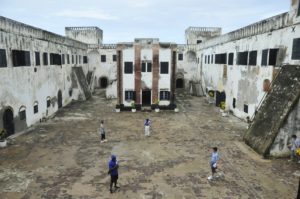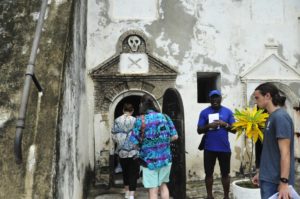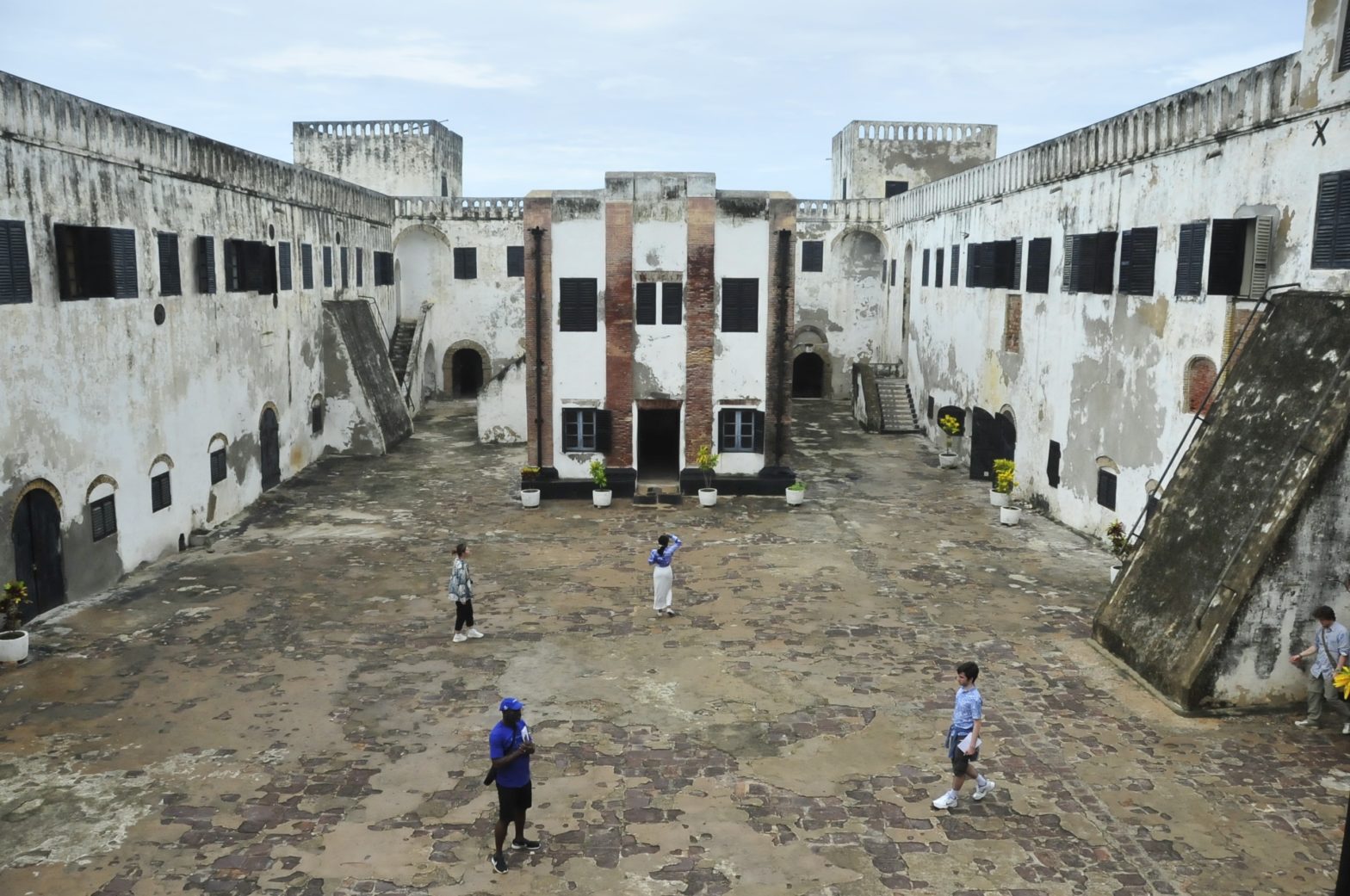by Chris Pyo
ELMINA, GHANA – Increasingly loud laughter echoed through the walls of the Elmina Castle, where a group of boisterous visitors left other tourists speechless with their rowdy off-color jokes just at the start of their tour, a tour of a place many consider to be sacred ground.
One woman even mockingly asked members of her group “Where are my slaves?” while entering one of the slave dungeons, an ill-mannered comment considering the history behind the room her group was about to enter.
But the tour guide wasn’t shocked. He simply shook his head and sighed heavily.
“It is common for tourists to act in this manner here,” Ato Ashun said. “Hopefully after they finish their tour, the woman will realize that her words are wrong.”

Located on the southern coastline of Ghana, the Elmina Castle was constructed by the Portuguese in 1482 and was utilized as one of the main ports for Europeans to hold tens of thousands of slaves before transporting them to the Americas by way of the transatlantic slave trade.
Today, the castle is recognized as a UNESCO World Heritage Site along with two other Ghanaian castles that were utilized by European slave traders.
According to Ashun, who has led tours at the castle for twenty years, captured slaves from as far as the northern regions of present-day Ghana were forced to make the arduous trek on foot down to the Gold Coast, totaling over 350 miles on foot alone.
They were then subjected to countless forms of abuse at the hands of their captors before being led through the “Room of No Return” onto a boat and to sea for a journey that totaled over 4,000 miles.
One particularly haunting area in the castle was the “Condemned Room.” Marked by a skull and crossbones insignia carved into stone, the room was reserved for rebellious slaves who were then starved to death. Even as rotting corpses piled up, more and more slaves were still locked up in the room, left to meet the same gruesome fate as the corpses next to them.

Across from there were the male and female slave dungeons, where the women had made her insensitive remarks that initially grabbed Ashun’s attention.
Maclean Eshun has worked at the gift shop at the castle for eight years, and he has seen his share of disrespectful individuals meander through the store.
However, he also noted that it is not solely tourists who often act ignorantly, but also Ghanaians as well, especially younger students who are unaware of the castle’s history.
“Many Ghanaian students also don’t take their visit here seriously because they’re forced to come by their teachers,” remarked Eshun. “They come to laugh and play when they should be respecting the gravity of the castle, and this feeds into the cycle of ignorance that we need to prevent for future generations.”
Jin Kim, a third-year medical student at Virginia Commonwealth University visiting Ghana for a medical trip, hoped to positively shift the narrative that identifies many foreigners as oblivious to Ghana’s history.
“We actually took a short course about cultural humility before we came here, and we were specifically told what to do and what not to do while taking into consideration the history of Ghana” said Kim.
When questioned on what could be done to combat the ignorance demonstrated towards historical landmarks such as the castle, Ashun acknowledged that there is some onus on guides such as himself to heighten awareness about the struggles their ancestors went through.
“The tourists are sometimes wrong, but we must do a better job telling our own history as well,” said Ashun. “We will never be in the position to comprehend what our ancestors truly suffered through, but we must always try to honor their legacy.”

